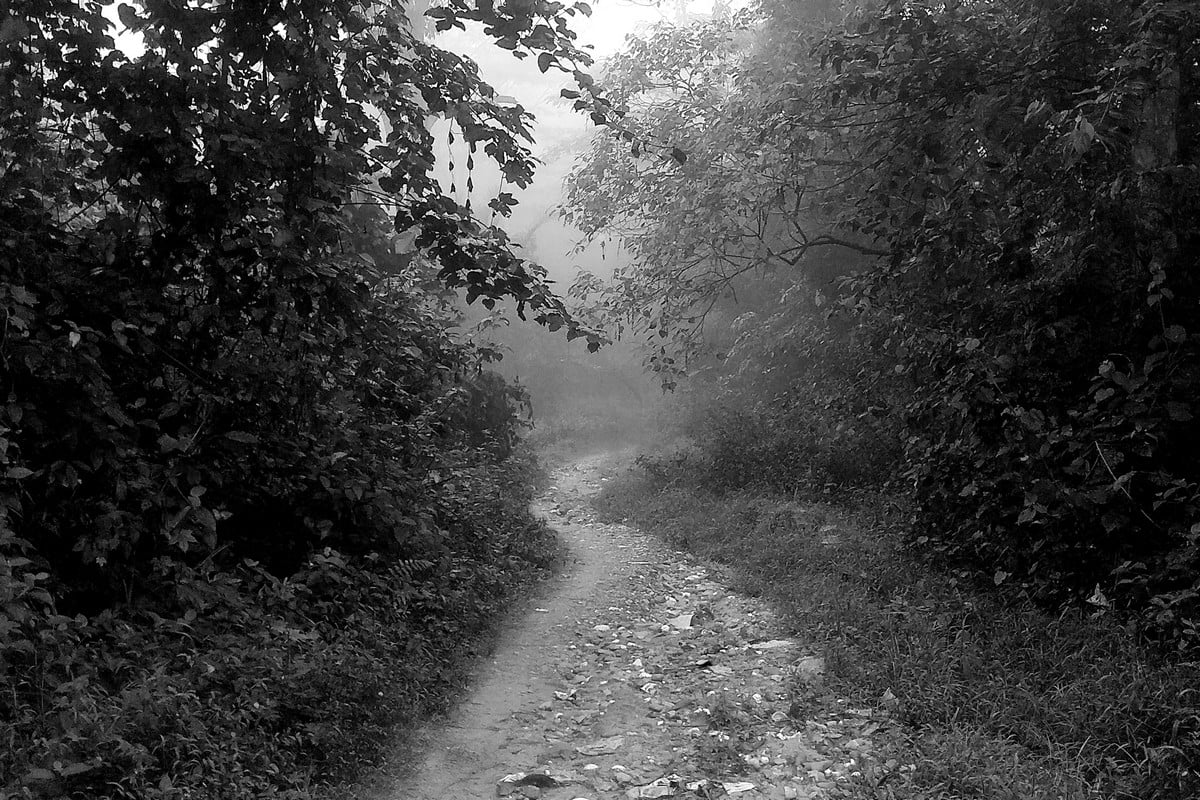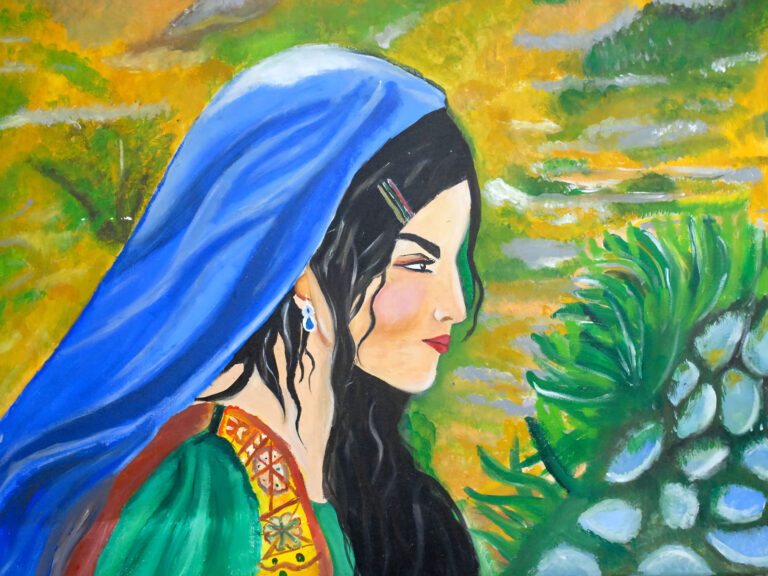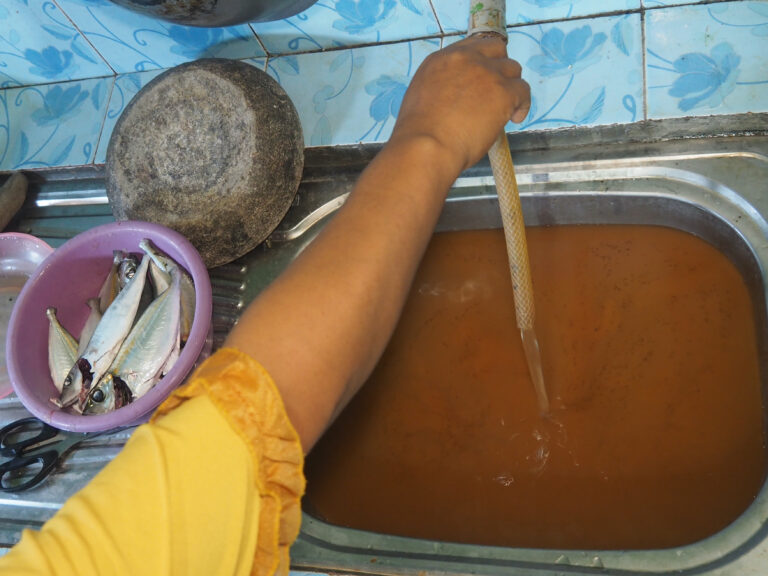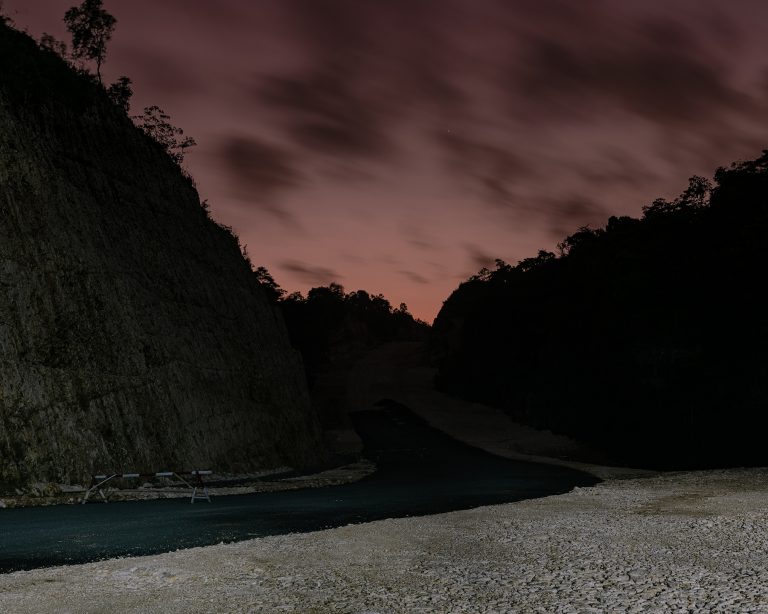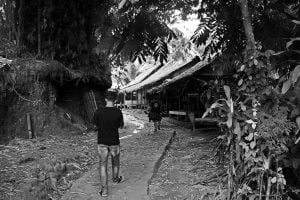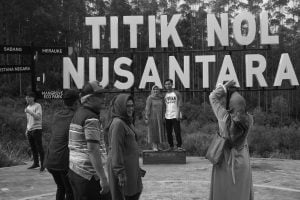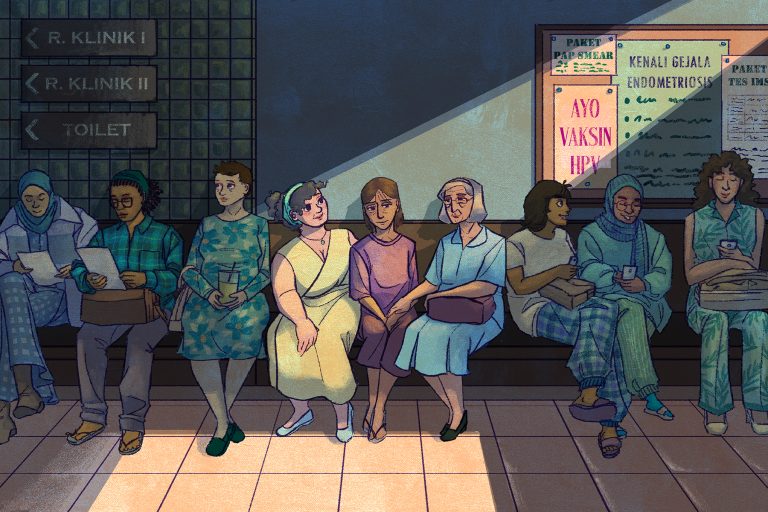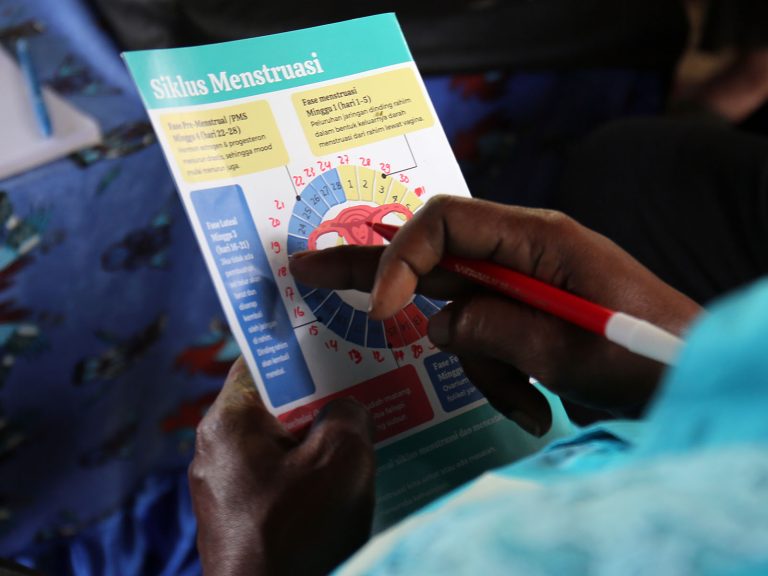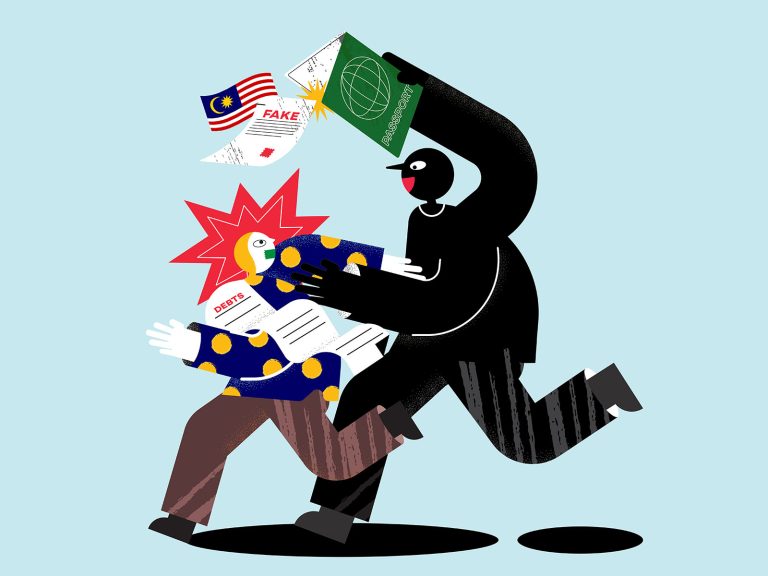The Bukit Suban Market in Air Hitam district, Sarolangun, Jambi, has long served as a meeting point for outsiders and the Orang Rimba indigenous community living in the forest.
One recent Tuesday morning, the market was packed with buyers and sellers shouting as they went about their business. Across the street, a host of street food vendors served customers.
Suddenly, a woman in her 70s collapsed in the middle of the crowd. Chaos followed. Some screamed. Others ran away.
“The old woman was shopping and she suddenly fell to the ground. She died,” said Nelitis, a member of the Tumenggung Grip, an Orang Rimba indigenous communities.
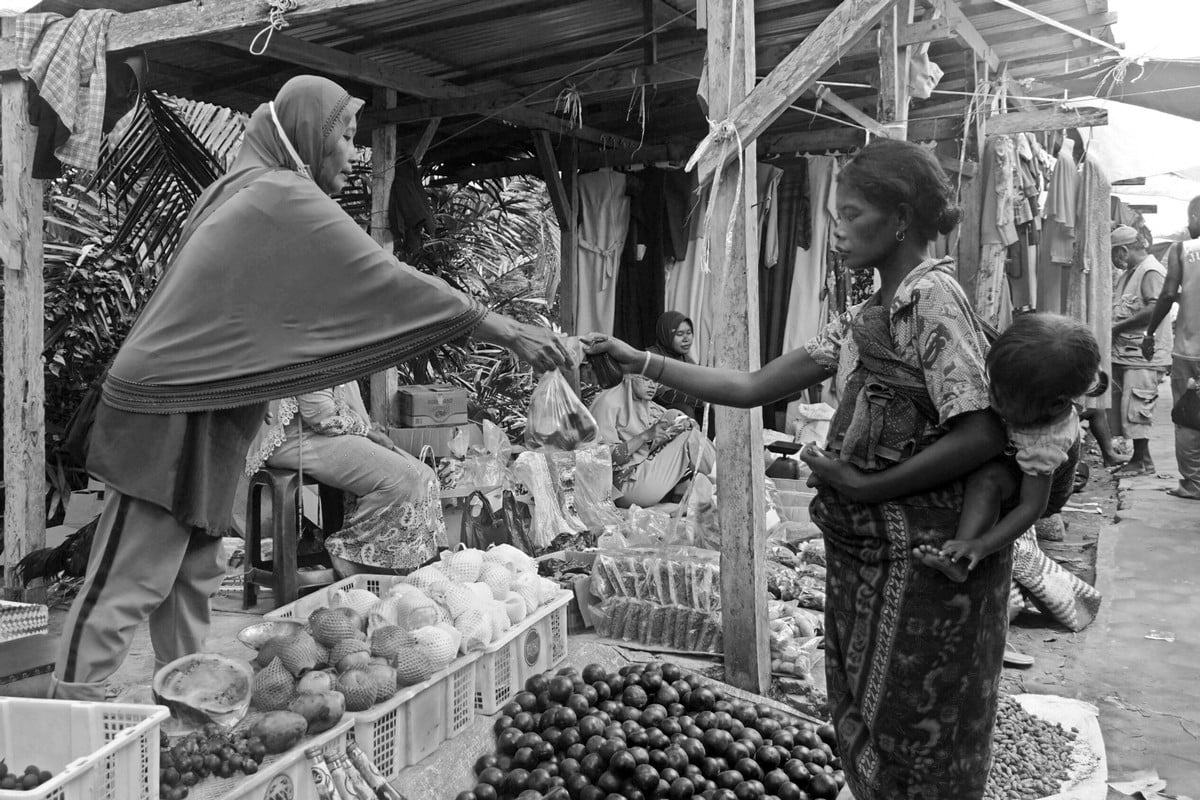
The news of the woman’s death spread fast. Tumenggung Grip who occupied a government-granted house in Bukit Suban were afraid that Covid-19 was advancing and would kill everyone.
A shaman named Prabung rushed into the forest and started to burn incense. He mumbled, seeking God’s guidance.
“The voice asked us to flee,” Prabung said.
Upon hearing this, dozens of Tumenggung Grip rushed into the forest to practice their customary isolation ritual, besesandingon.
In this centuries-old tradition, the Orang Rimba stay deep inside the forest in a self-styled lockdown, away from the outside world. If someone falls sick, they’re quarantined 10 to 15 meters away from the others. During besesandingon, the community lived in huts located just outside Bukit Duabelas National Park, several kilometers from Bukit Suban.
Mekimbai, who had been resting in the middle of a palm oil plantation, panicked when she saw the Tumenggung Grip enter the forest.
The woman, who is from another Rimba group, tightened the sling holding her baby son and ran into the forest with a rice pot and some clothes. Mekimbai left her tarpaulin tent behind.
“When one group enters the forest to save themselves, we follow suit,” said Mekimbai’s husband, Sekolah, at the park.
Residents of Bukit Suban had dug several graves over three days in early May. This convinced the Orang Rimba that Covid-19 was killing people, including the elderly woman who died at the market.
“I heard Covid-19 spreads fast and has killed many people in a short period of time. It’s unlike the rare gelabah [plague] that kills at most one person a week,” Prabung said .
At least three people died in Bukit Suban in the first week of May: Tugiem, 70, on a Sunday morning; Wariem, 60, on Monday; and Supi, 50, the following day.
However, the village head, Agus Supriyadi, said all three died of old age. “They had long suffered from illness. Besides, none of them collapsed in the market. It was fake news,” he said.
The Orang Rimba stayed in the forest for weeks and practiced strict isolation. They also banned outsiders.
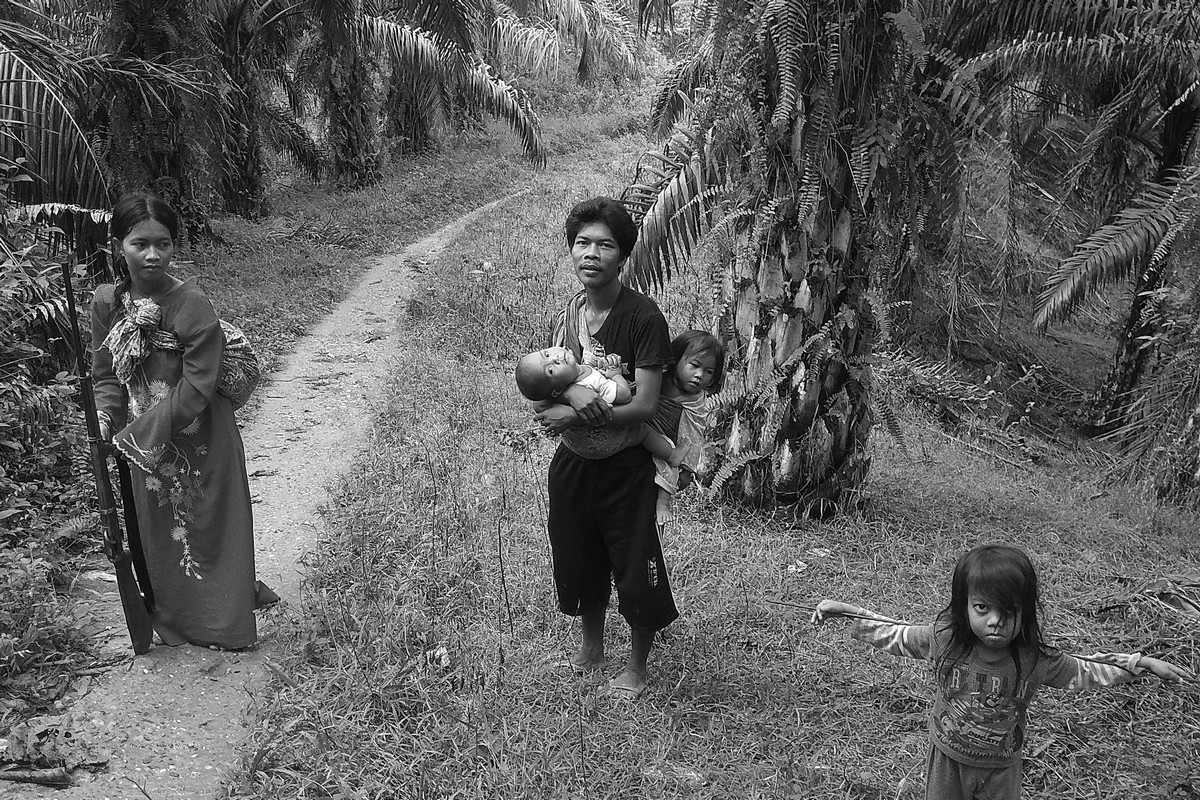
“The community sees outsiders differently. They have to be cautious,” said Adi Prasetijo, an anthropologist from Diponegoro University in Semarang. Prasetijo has studied the Orang Rimba for 15 years.
Long ago, he said, Orang Rimba made a vow with the ethnic Malay and other local communities that they would stay inside the forest while the so-called Orang Terang, or outsiders, would live in villages.
The Orang Rimba believe that everything coming from where the Orang Terang live brings misfortune and thus should be avoided. Covid-19 has reinforced that belief.
Warding Off Diseases with Tradition
With no cure for Covid-19, besesandigon has come to the rescue of the Orang Rimba. The tradition has been effective so far. No Orang Rimba has contracted Covid-19 as of Aug. 12, 2021.
Around 221 cases have been confirmed in Sarolangun where the Tumenggung Grip live. None came from the Orang Rimba.
The indigenous people carry out their tradition strictly. Those who are healthy (bungaron) keep a safe distance from the sick (cenenggo), who are kept 10-15 meters away from the rest, according to besesulangon.
“If we didn’t conduct the besesandingon during a plague, many of us would have been infected right away,” Prabung said.
Tarib, another Tumenggung Grip member, said that the Orang Rimba who worked in Bukit Suban should be quarantined for a week before returning to the forest.
“If they are doing fine, then they are OK to enter the forest,” he said. “Any food brought from the village must be soaked or exposed to dew overnight to sterilize it”.
The Orang Rimba are selective when it comes to meeting outsiders. The Tumenggung Grip asked me to produce a statement that I was Covid-19 free before I could meet the group.
In addition to besesandingon, the community conducts rabunan, in which they burn seven kinds of thorny trees around a house before inserting rattan thorns in every corner to prevent disease.
Once in a while, shamans pray to their deities in a special ritual called bala. “If our prayers are answered, the outbreak will stay away,” Prabung said. But nowadays, he added, it seems that prayers are rarely answered. He noted that many Orang Rimba now consume livestock, which is taboo.
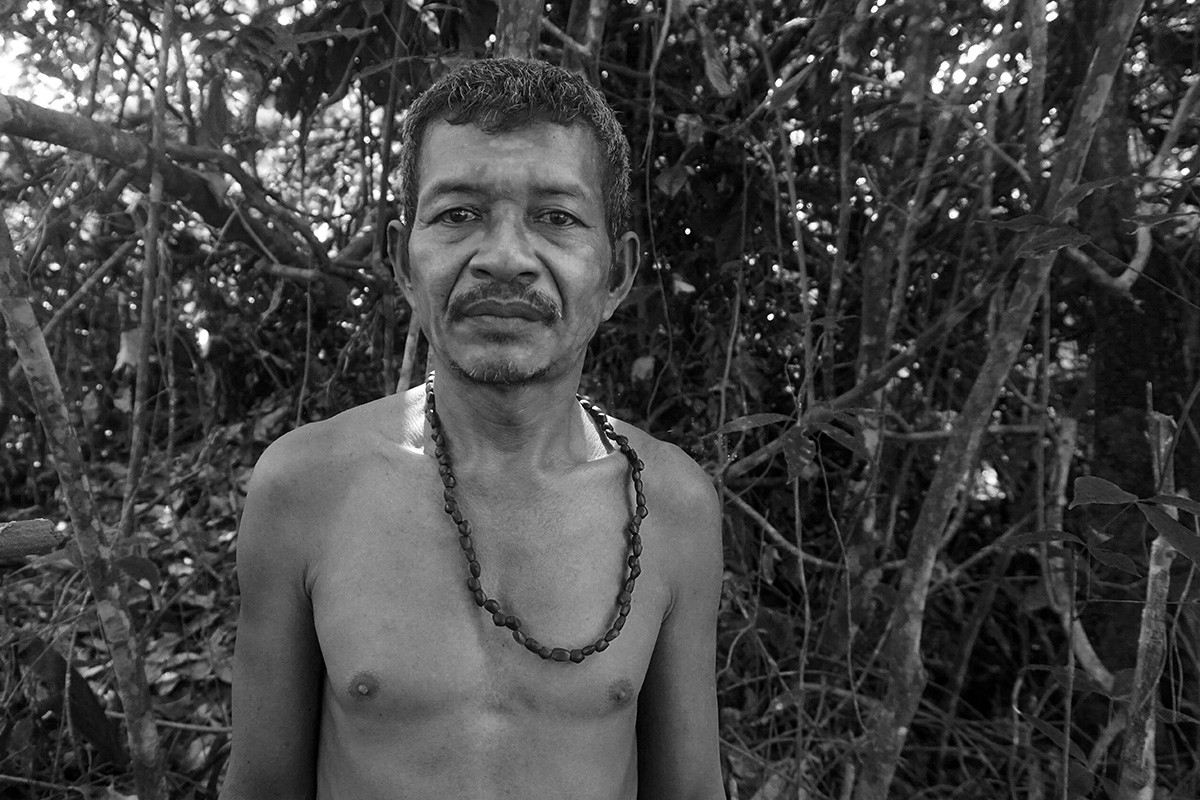
“The poor condition [of the forest] forces us to eat forbidden food, like processed stuff. That spoils our prayers. Actually, we’re only allowed to eat organic food provided by Mother Nature,” he continued.
Going Hungry During the Pandemic
Nelitis, the Tumenggung Grip who saw the elderly woman die at the market, has gone to great lengths to support his five children during the pandemic. Although the besesandingon banned him from contacting his Orang Terang employer, Nelitis says he sometimes brakes traditional quarantine.
“It’s getting hard to find valuable goods in the forest,” he said. “The price of rubber has plunged, while rattan and jernang resin are no longer worth a rupiah.”
When food ran out, Nelitis and other Tumenggung Grip walked deep inside the forest to look for benor, a large sweet potato, and gadung, an otherwise poisonous wild yam root that takes a week to be processed safely.
“No matter how hard we try, we can only get around 2 kilograms of gadung a day. It’s not enough to feed 10 children,” said Nelitis. It is common in the community for a man to have more than one wife and numerous children.
Another Tumenggung Grip member, Sekolah, shared a similar experience. He has been selling–for Rp 25,000–fallen palm kernels he scavenges from other people’s plantations. If he’s caught, the consequences will be severe–technically this is theft.
Prabung, on the other hand, relies only on his sweet potato field to survive.
“We’ve got to work under the scorching sun every day in the field while keeping an eye on pests, like monkeys,” he said. Sometimes he fasts for days before getting charity food assistance from companies operating in the area.
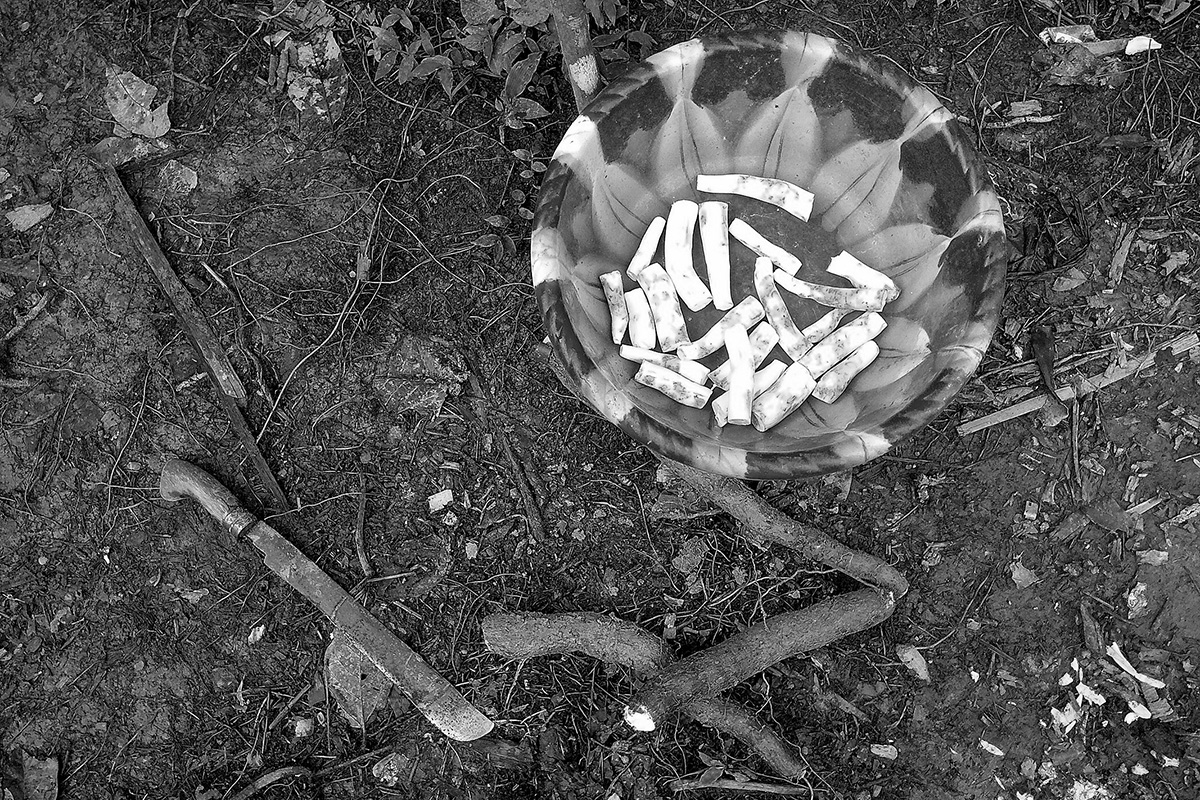
Rampant land clearing for plantations and housing have reduced the Orang Rimba’s living space in the forest. Although some have been living in government-supplied houses, they still rely on the forest for food.
The national park and its surrounding areas once supplied the basic needs of the Orang Rimba. Today, around 60,000 hectares have been given over to conservation, with the remainder transformed into plantations and worker housing.
As a consequence, the forest’s ecological balance has been disrupted. The Orang Rimba contend with monkeys, porcupines, and pigs that often destroy their crops.
When I visited, I discovered some Orang Rimba had also converted their land to cultivate palm oil and sweet potatoes, while many rubber plantations had been abandoned due to decreasing production.
Meanwhile, rice assistance from the government has been difficult to get. A group led by Tumenggung Aprizal in Singosari, for example, has not received aid for four months due to istrative problems.
Aprizal claimed he had handed over the required copies of his people’s IDs to officials. “The aid disbursement has been postponed for four months. The officials keep citing problems in data synchronization.”
Apparently, the Social Affairs Ministry found double records for 972 Orang Rimba eligible for food assistance: 551 in Sarolangun, 176 in Merangin, 166 in Tebo, 52 in Tanjung Jabung Barat, 19 in Batang Hari, and 8 in Bungo.
“That is why we cannot just disburse the aid,” said Usup Suryana, an official at Jambi’s Social Agency.
He blamed Orang Rimba’s nomadic lifestyle. “Their data might be recorded every time they move to a new place, hence the double records”.
Deforestation and Emerging Diseases
Tarib, of the Tumenggung Kecik in the southern part of Tebo regency, said that Covid-19 reminded him of a plague that claimed the lives of dozens of his group in 1972.
The plague, called memacak-macako pinggan, killed 32 people in one day. It was a mysterious malady, according to Tarib. Every death was preceded by the breaking of a glass plate. “That was the worst plague that had ever happened,” he says. Only six people from his community survived.
A decade apart, Tarib’s group in Air Panas was hit by a fast-moving measles outbreak that killed 50.
New outbreaks attack the indigenous community every year–whether skin diseases, measles, smallpox, fever, coughs, vomiting, or diarrhea. The Orang Rimba believe that every fruit season, or betahunan, is followed by an outbreak.
“Long ago, [outbreaks] rarely happened,” Prabung said.
He said that more diseases emerged as countless trees were chopped down to make space for palm oil plantations and housing. In the 1970s and 1980s, there was a massive amount of land clearing in Air Hitam, as the Indonesian government relocated people from other regions to develop the area.
This transmigration program replaced Orang Rimba’s living space with palm oil plantations intended to boost the local economy. The Air Hitam transmigration area is located at the edge of Bukit Duabelas National Park, whose buffer zones are controlled by at least 16 palm oil companies.
According to KKI Warsi, an Indonesian conservation NGO, Jambi has lost over 1.5 million hectares of forest cover in the past three decades. The remaining forest cover area is around 900,000 hectares.
“When the forest was intact, diseases struck the trees instead of humans. Now that the forest is depleted, they strike us right away,” Prabung said.
Data from the Sarolangun Health Agency shows that Orang Rimba are susceptible to diarrhea, malaria, acute respiratory infections, and skin diseases. “All kinds of diseases have emerged,” Prabung stated.
Disappearing medicinal plants
Rampant outbreaks have been exacerbated by the disappearance of medicinal plants in the exploited forest.
An expedition by the Health Ministry, the Indonesian Institute of Sciences (LIPI), and the Bogor Institute of Agriculture found 101 different species of medicinal plants and 27 different medicinal mushrooms in the park.
Orang Rimba are renowned for their ability to concoct medicine out of plants. For instance, they use a grass named bemambu to treat coughs, and rattan sap to cure colds. A shrub root called pasak bumi (Eurycoma longifolia) is used to treat various diseases, including malaria.
Prabung estimates that half of the medicinal plants have vanished. “In the past, we could find all the cures for diseases in the forest.”
Among the increasingly rare medicinal plants are capo or sembung (Blumea balsamifera) leaves, used to treat colds and fever. “There used to be abundant capo leaves here,” said Depati Njalo, a member of the Tumenggung Grip. “The leaves are boiled in the water that we later use for bathing.”
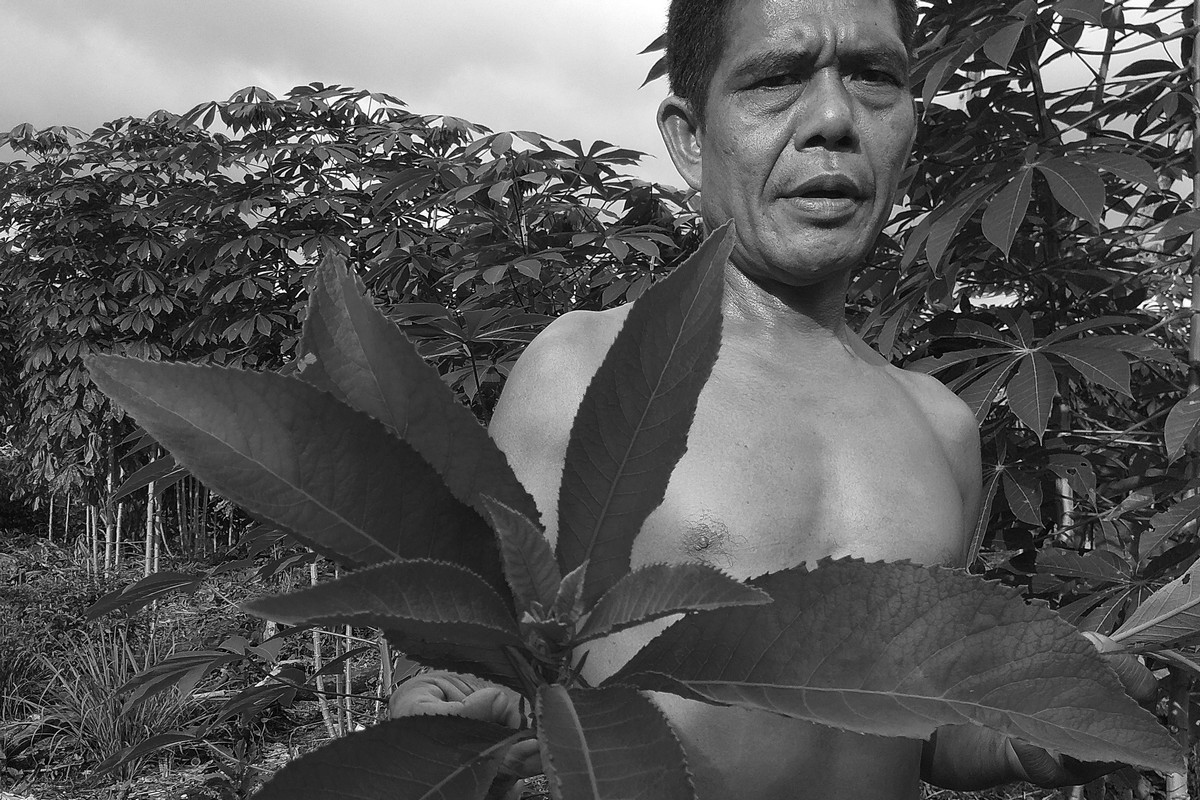
Tarib said it was also hard to find sejarak (Ricinus communis) leaves. Sejarak trees used to thrive along Air Hitam’s rivers. The leaves were used by Orang Rimba as a fertility and birth control treatment.
“If a woman wanted to space pregnancies over seven years, she would eat seven sejarak leaves. The plants, however, have become extinct,” Tarib said. A grass called purun (Lepironia articulata) also vanished; Orang Rimba had used it for rituals evoking the deities.
The Tumenggung Grip are aware that the Orang Rimba cannot stop the government from giving permits to the companies. All they can do is help preserve the forest and protect what is left.
Meanwhile, Depati Njalo started to grow hundreds of medical plants in the last month, including a tree root called kacom, to treat strokes, and jerampang, to treat vomiting and diarrhoea.
“We’re doing it before it’s completely gone amid rampant land clearing,” Tumenggung Grip said.
Editor: Mawa Kresna, Ati Nurbaiti, Christian Razukas
The translation of this article from Indonesian to English is made possible through the generosity of one of our readers, Ivany Atina Arbi.
This article was first published in Indonesian as part of the series Project Multatuli’s indigenous people series, #MasyarakatAdat.


